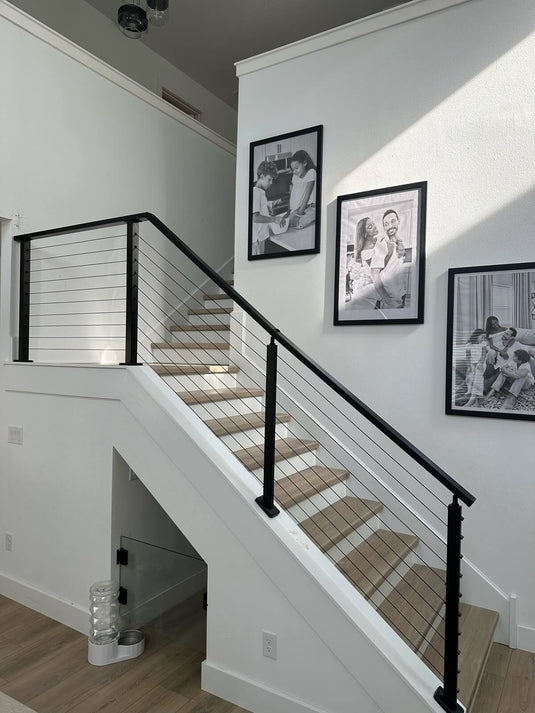TABLE OF CONTENTS
Cable Railings vs Traditional Railings: Impact on Human Psychology and Behavior
When it comes to railing design, the choice between cable and traditional styles goes beyond aesthetics. These decisions quietly shape how we experience space—how open or secure it feels, how we move, and even how we connect with others. In this article, we’ll explore how different railing styles can subtly influence our psychology and behavior in everyday environments.

How Railing Design Impacts Behavior: 6 Key Insights
The choice between cable railings and traditional railings goes far beyond style. It subtly shapes how we feel, move, and interact in everyday spaces. Here’s how different railing styles influence our psychology and behavior across six key dimensions.
1. How Space Feels 🌴
Cable railings create a clean, open atmosphere—like an invisible boundary that expands your view without blocking it. This transparency allows light and sightlines to flow, making rooms or decks feel larger and more connected.

In contrast, traditional railings draw clear visual lines around a space. While this can feel more enclosed, it also offers a sense of structure and coziness that some people find comforting.
2. How People Move 🏞️
The open design of cable railings invites free, intuitive movement. With fewer visual obstructions, people tend to navigate spaces more fluidly, as if the environment is gently guiding them rather than restricting them.
Traditional railings offer a more structured experience. Their presence naturally defines pathways and boundaries, helping to organize movement—especially in multi-level spaces or areas that require clearer direction.
3. Comfort, Stress & Safety 🛡️
Cable railings help reduce stress by making spaces feel less confined. The openness they create eases visual tension, which can be especially calming in compact or elevated areas. This transparency also contributes to a subtle sense of safety by allowing people to remain visually aware of their surroundings.

While traditional railings may lack openness, they provide a strong physical sense of protection. The solid barriers act as psychological anchors—particularly helpful for families with children or in spaces where people need extra reassurance, such as balconies or staircases.
4. Social Interactions & Privacy 🥂
By removing visual barriers, cable railings encourage connection. The open sightlines make it easier to engage with others and create a sense of togetherness in shared spaces.

However, in certain contexts, privacy and defined personal space are just as valuable. Traditional railings serve this function well by subtly reinforcing social boundaries and minimizing unintentional intrusions—ideal for intimate or high-traffic settings.
5. Mental Processing 🧠
Cable railings simplify how we interpret space. With minimal visual interruption, the brain can more quickly assess surroundings, reducing cognitive load and enhancing comfort.
At the same time, the defined edges of traditional railings provide helpful visual markers. In unfamiliar environments or areas requiring orientation—like large homes or public buildings—this can aid in spatial understanding and wayfinding.
6. Emotional Responses 😃
Our reactions to different railing styles are deeply rooted in psychology. Cable railings support our natural preference for openness and environmental awareness. They foster a greater sense of control, reduce anxiety, and reflect modern design preferences.
On the other hand, the stability and predictability of traditional railings cater to our need for security. Their presence communicates protection, triggering a reassuring emotional response, especially in settings that feel unfamiliar or potentially unsafe.
How Context Shapes the Psychological Impact of Railing Designs
Different environments call for different feelings. In homes, cable railings create an expansive and modern feel, while traditional railings may provide a comforting sense of enclosure and order—especially for families or in safety-sensitive areas.
Click to explore our stunning railing gallery >>

In commercial or public spaces, these effects are equally impactful. Cable railings help dissolve visual hierarchies, making offices or shared areas feel more collaborative. Traditional railings, meanwhile, offer organizational clarity and guide movement efficiently, maintaining order in high-traffic zones.
Conclusion
Choosing between cable and traditional railings isn’t just about looks—it’s about how your space feels and functions. Cable railings offer openness and flow, while traditional railings provide structure and comfort. Both have their place.
Unlock Your Perfect Railing Journey!
Ready to transform your space? Share your vision or project details with us, and let’s craft your dream railing together!
Get My Free Plan




